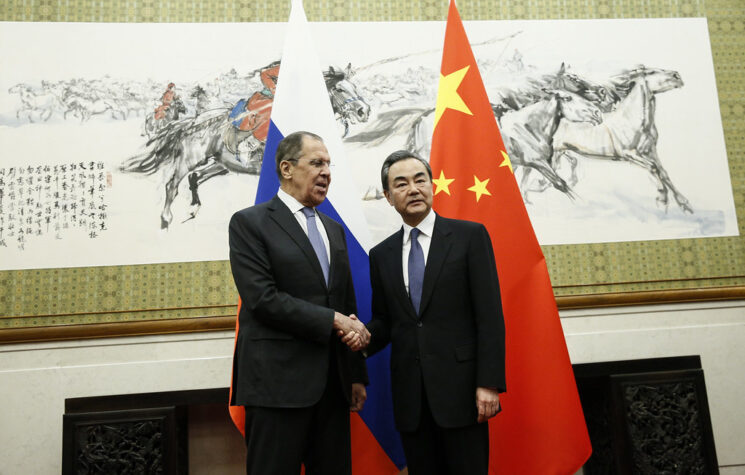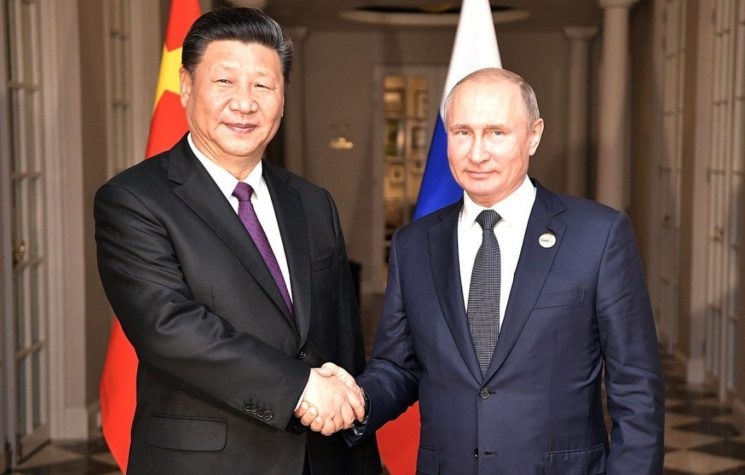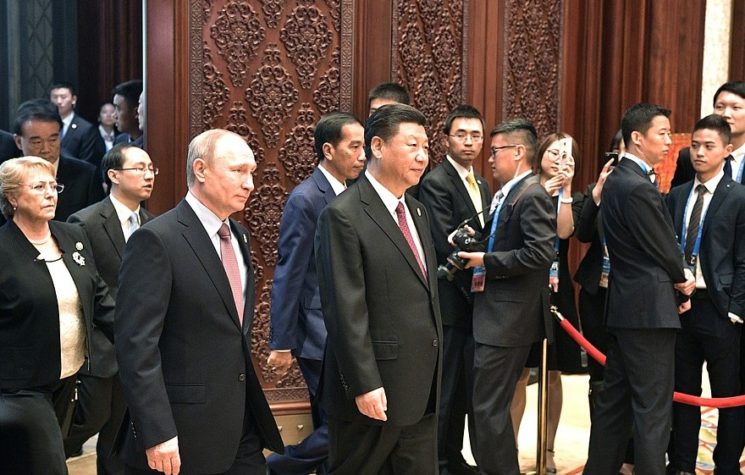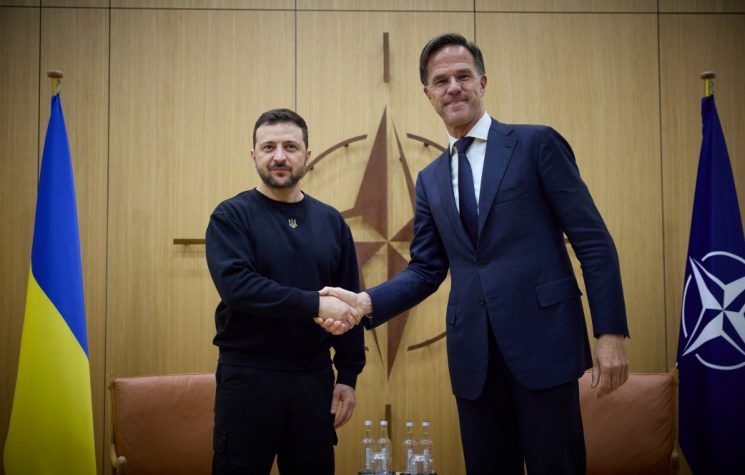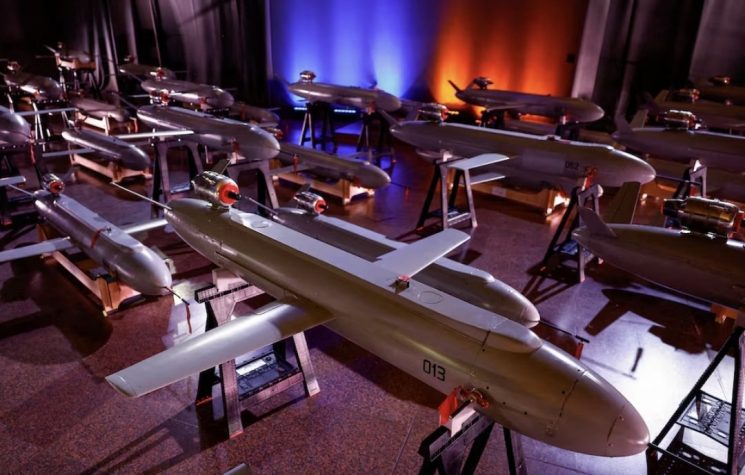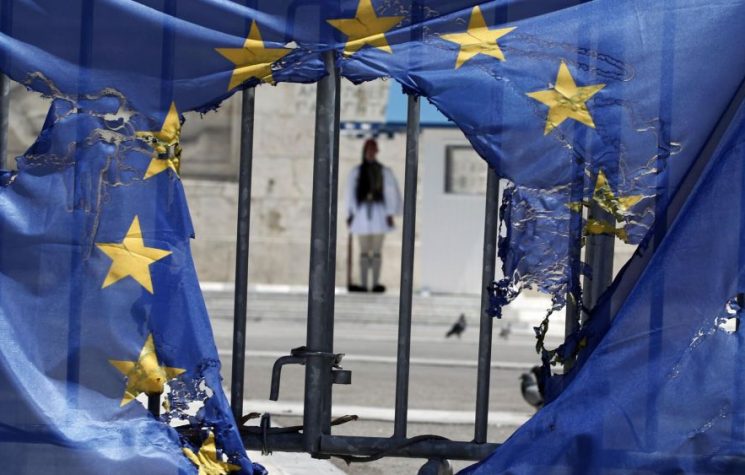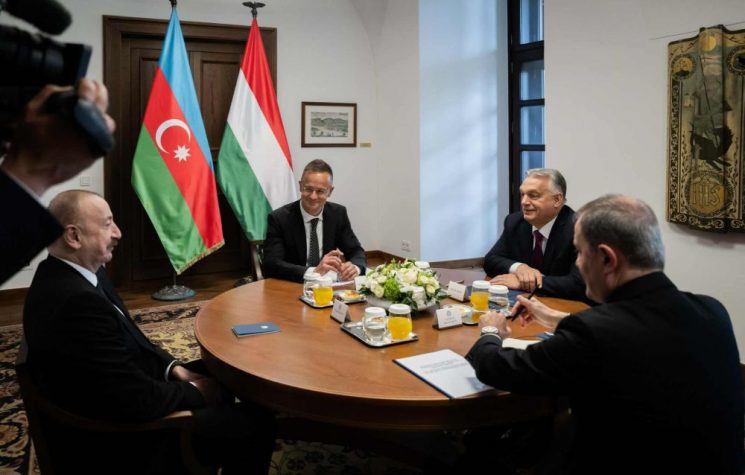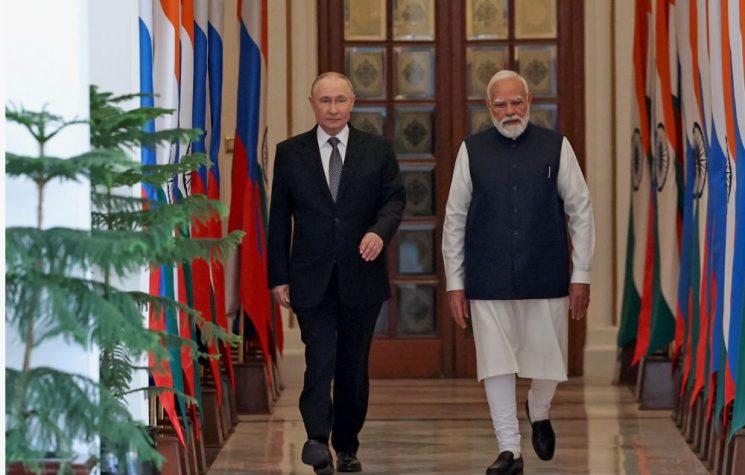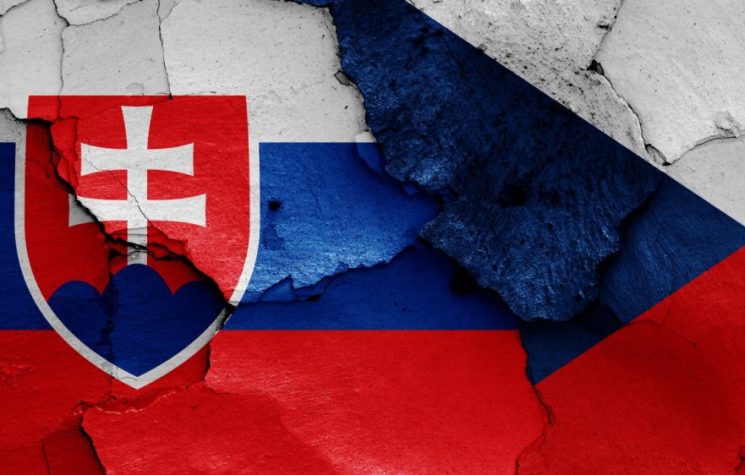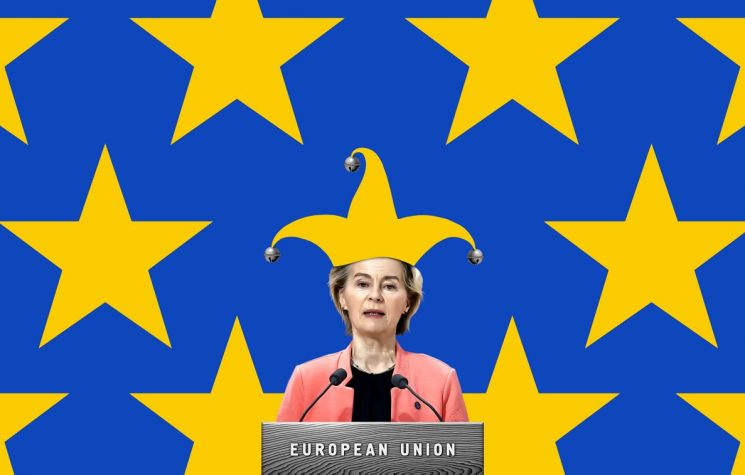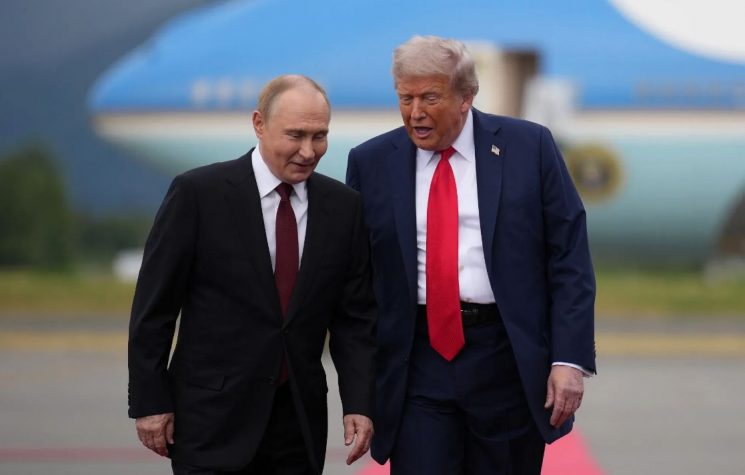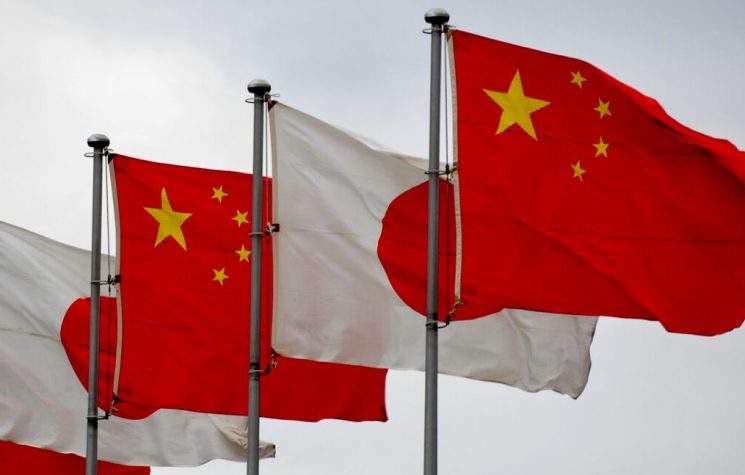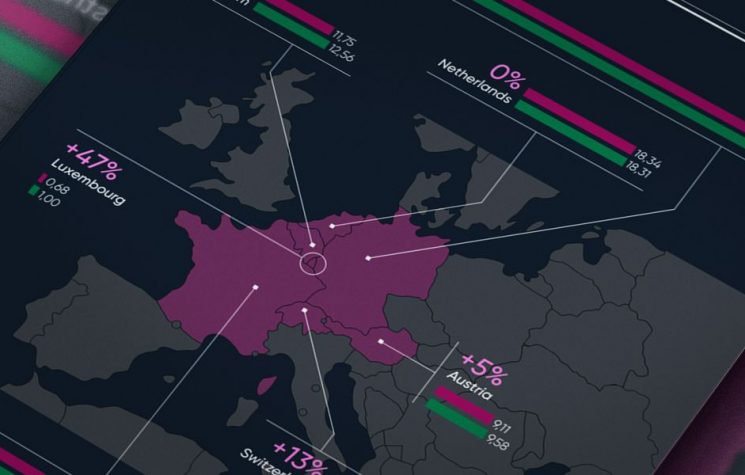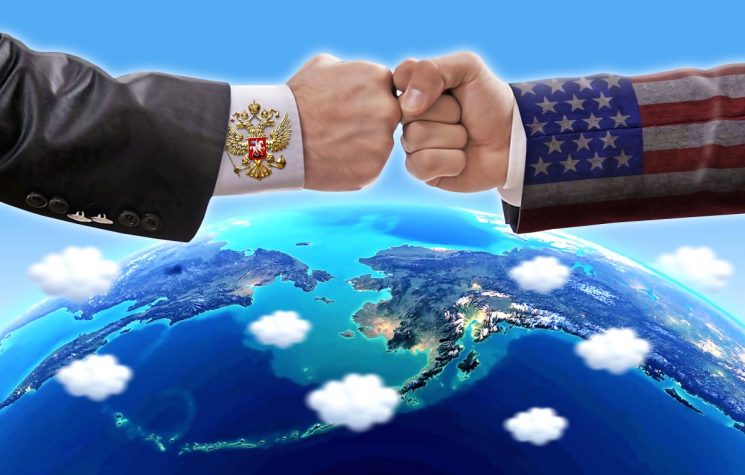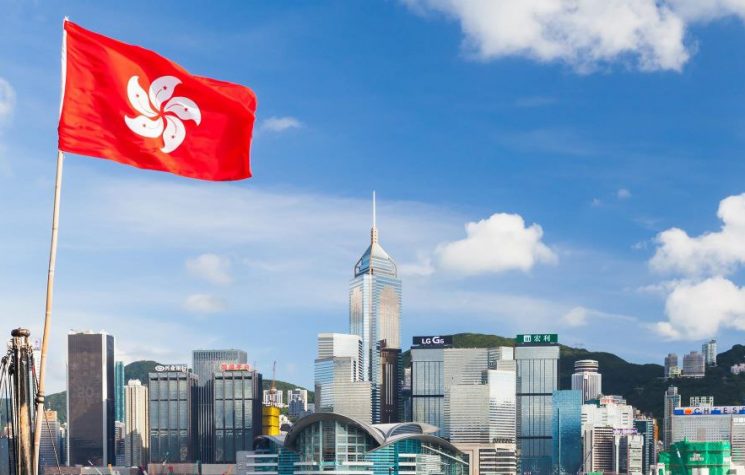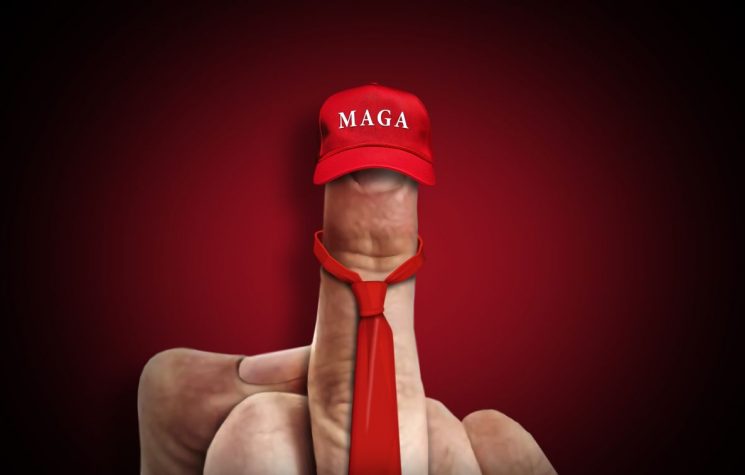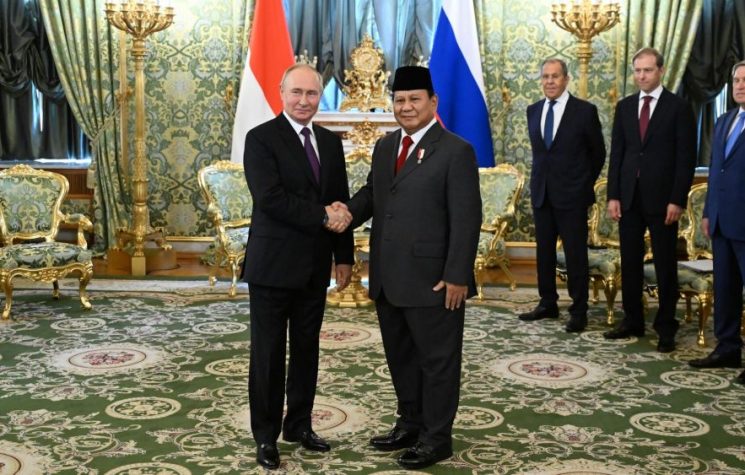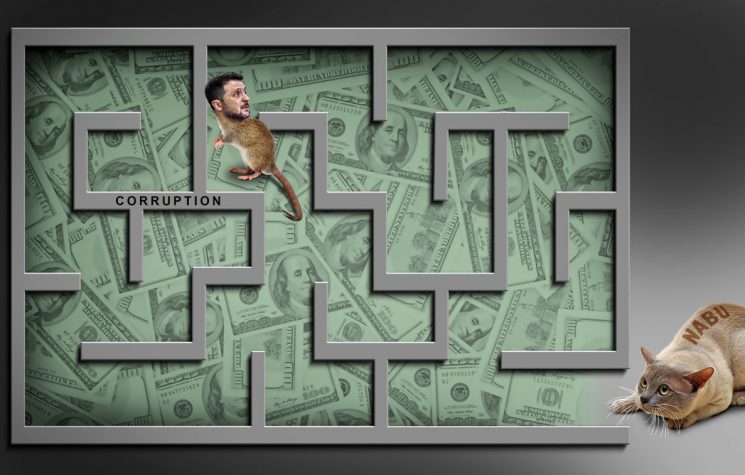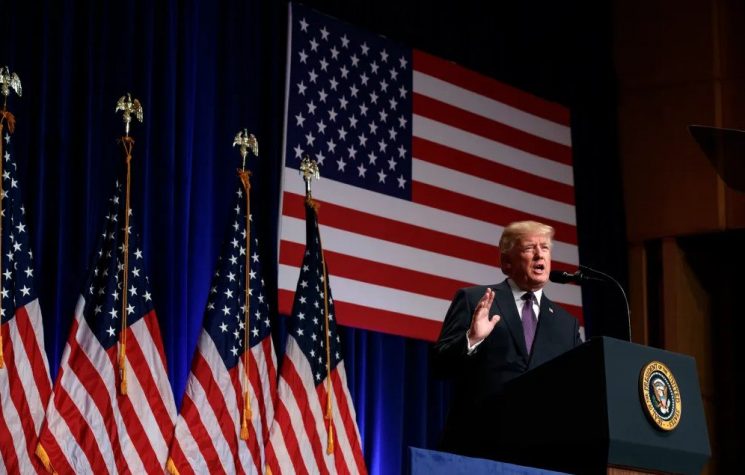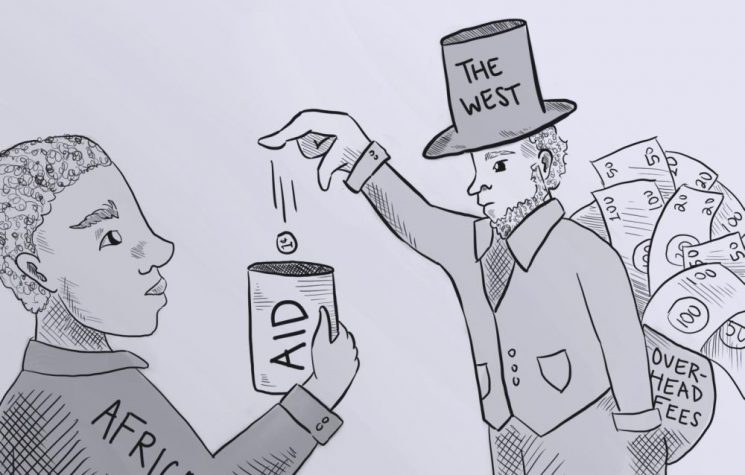The U.S. will ignore the message from Anchorage. It is already testing China over Taiwan, and is preparing an escalation in Ukraine, to test Russia.
Sun Tzu’s The Art of War (c. 500 BCE) advises that: “To secure ourselves against defeat lies in our own hands; yet the opportunity of defeating the enemy is provided by the enemy himself … Therefore the clever combatant imposes his will; and does not allow the enemy’s will to be imposed on him”. This is the essence of the Chinese resistance economy – a strategy which has been fully unveiled in the wake of the Anchorage talks; talks that silenced any lingering thoughts in Beijing that America might somehow find some modus vivendi with Beijing in its headlong pursuit of primacy over China.
Although earlier there had been tantalising glimpses of déshabillé, the full reveal to China’s tough stance and rhetoric has only been permitted now – post-Anchorage – and the talks’ confirmation that the U.S. intends to block China’s ascent.
If it is assumed that this ‘resistance’ initiative constitutes some tit-for-tat ‘jab’ at Washington – through sinking Biden’s Iran ambitions, as revenge for America loudly crying ‘war crimes’ (‘genocide’ in Xingjian) – then we miss wholly its full import. The scope of the Iran pact by far transcends trade and investment, as one commentator in the Chinese state media made plain: “As it stands, this deal (the Iran pact) will totally upend the prevailing geopolitical landscape in the West Asian region that has for so long been subject to U.S. hegemony”.
So here is the essence to ‘a clever combatant moving to impose his will’ – there is no need for China or Russia or Iran to go to war to do this; they just implement ‘it’. They can do ‘it’ – quite simply. They don’t need a revolution to do it, because they have no vested interest in fighting America.
What is ‘it’? It is not just a trade and investment pact with Tehran; neither is it simply allies helping each other. The ‘resistance’ lies precisely with the way they’re trying to help each other. It is a mode of economic development. It represents the notion that any rent-yielding resource – banking, land, natural resources and natural infrastructure monopolies – should be in the public domain to provide basic needs to everybody – freely.
The alternative way simply is to privatise these ‘public goods’ (as in the West), where they are provided at a financialized maximum cost – including interest rates, dividends, management fees, and corporate manipulations for financial gain.
‘It’ is then a truly different economic approach. To give one example: New York’s Second Avenue Subway extension cost $6 billion, or $2 billion per mile – the most expensive urban mass transit ever built. The average cost of underground subway lines outside the U.S. is $350 million a mile, or a sixth of New York’s cost.
How does this ‘it’ change everything? Well, just imagine for a moment: the biggest element in anyone’s budget today is housing at 40%, which simply reflects high house prices, based on a debt-fuelled market. Instead, imagine that proportion at 10% (as in China). Suppose too, you have low-cost public education. Well then, you are rid of education-led debt, and its interest cost. Suppose you have public healthcare, and low priced transport infrastructure. Then you would have the capacity to spend – It becomes a low-cost economy, and consequently it would grow.
Another example: The cost of hiring R&D staff in China is a third to half the comparable cost in the U.S., so China’s tech spend is closer to $1 trillion a year (in terms of purchasing power parity), whereas the U.S. spends just 0.6% of GDP, or about $130 billion, on federal R&D.
At one level therefore, this ‘it’ is a strategic challenge to the western eco-system. In one corner, the debt-driven, hyper-financialised, yet stagnant economies of Europe and the EU – in which strategic direction and economic ‘winners and losers’ are set by the Big Oligarchs, and in which the 60% struggle, and 0.1% thrive. And, in the far corner, a very mixed economy in which the Party sets a strategic course for state enterprises, whilst others are encouraged to innovate, and to be entrepreneurial in the mould of a state-directed economy (albeit, with Taoist and Confucian characteristics).
Socialism versus capitalism? No, it is a long time since the U.S. was a capitalist economy; it’s hardly even a market economy today. It has become, more and more, a rentier economy since leaving the gold standard (in 1971). This forced U.S. exit from the ‘gold window’ facilitated the U.S. via the resultant global demand for U.S. debt instruments, (Treasury bonds), to finance itself for free (from out of the entire world’s economic surplus). The Washington Consensus ensured additionally that the inflows of dollars to Wall Street from around the globe would never be subject capital controls, nor would states be able to create their own currency, but would have to borrow in dollars from the World Bank and the IMF.
And that essentially meant borrowing from the Pentagon and the State Department in U.S. dollars, who ultimately were the system ‘enforcers’, as Professor Hudson notes. The shift in the U.S. financial system to being an entity that that prioritises ‘real’ assets, such as mortgages and real estate that offer a certain ‘rent’, rather than to invest directly in speculative business ventures, also means that debt jubilees are verboten. (The Greeks can recount the experience of what that entails, in grim detail).
The point is that – at the economic plane – the U.S., hyper-financialised sphere is fast shrinking, as China, Russia and much of the ‘World Island’ turn to trading in their own currencies (and do not buy U.S. Treasuries). In a ‘war’ of economic systems, America therefore starts on the back foot.
Halford Mackinder argued a century ago that control of the ‘Heartland’, which stretched from the Volga to the Yangtze, would control the ‘World Island’, which was his term for all Europe, Asia and Africa. Over a century later, Mackinder’s theory resonates as the two leading nations behind the Shanghai Cooperation Organisation (SCO) transform this into a system of inter-relations from one Eurasian end to another. It is not so new, of course. It is simply the revival of the ancient trade-based economy of the Eurasian heartland, which finally was collapsed in the 17th century.
Alastair Macleod notes that commentators usually fail to understand ‘why’ this flourishing in West Asia is happening: “It is not due to military superiority, but down to simple economics. While the U.S. economy suffers a post-lockdown inflationary outcome and an existential crisis for the dollar – China’s economy will boom on the back of increasing domestic consumption … and increasing exports, the consequence of America’s stimulation of consumer demand and a soaring budget deficit”.
There, explicitly said, is Sun Tzu’s point! “Opportunity of defeating the enemy is provided by the enemy himself”. There is in Washington (and to an extent in Europe too), a faction entertaining a pathological emotional desire for war with Russia, largely stemming from a conviction that the Tzars (and later Stalin), were anti-Semitic. Their emotion is one of hatred and anger, yet it is they who largely are responsible for bringing Russia and China together. This, and America’s proclivity to sanction the world, has given China and Russia their opportunity.
The underlying point however, is that – even for the EU – the Rimland periphery is less important than Mackinder’s World Island. There was a time when British and then American primacy outweighed its importance – but this may no longer be true. What is actualising here is the greatest challenge yet mounted to American economic power and technological supremacy.
Yet this economic Realpolitik is but half the story to China and Russia’s launch of a ‘global resistance economy’. It has a parallel geo-political frame, too.
It is to this latter aspect, most probably, that the Chinese official referred when he said that the Iran deal would “totally upend the prevailing geopolitical landscape in the West Asian region that has for so long been subject to U.S. hegemony”. Note that he did not say that it would upend Iran’s relations with U.S. or Europe – he said the whole region. He implied too, that China’s initiatives would free West Asia from American hegemony. How so?
In an interview last week, FM Wang Yi outlined Beijing’s approach to the West Asian region:
“The Middle East was a highland of brilliant civilizations in human history. Yet, due to protracted conflicts and turmoil in the more recent history, the region descended into a security lowland … For the region to emerge from chaos and enjoy stability, it must break free from the shadows of big-power geopolitical rivalry, and independently explore development paths suited to its regional realities. It must stay impervious to external pressure and interference, and follow an inclusive and reconciliatory approach to build a security architecture that accommodates the legitimate concerns of all sides … Against this backdrop, China wishes to propose a five-point initiative on achieving security and stability in the Middle East:
“Firstly, advocating mutual respect … Both sides should uphold the international norm of non-interference in others’ internal affairs … it is particularly important for China and Arab states to stand together against slandering, defamation, interference and pressurizing in the name of human rights … [the EU should take note]
“Second, upholding equity and justice, opposing unilateralism, and defending international justice … China will encourage the Security Council to fully deliberate on the question of Palestine to reaffirm the two-state solution … We should uphold the UN-centred international system, as well as the international order underpinned by international law – and jointly promote a new type of international relations. We should share governance experience … and oppose arrogance and prejudice.
“Third, achieving non-proliferation … Parties need to … discuss and formulate the roadmap and timeframe for the United States and Iran to resume compliance with the JCPOA. The pressing task is for the U.S. to take substantive measures to lift its unilateral sanctions on Iran, and long-arm jurisdiction on third parties, and for Iran to resume reciprocal compliance with its nuclear commitments. At the same time, the international community should support efforts by regional countries in establishing a Middle East zone free of nuclear weapons and other weapons of mass destruction.
“Fourth, jointly fostering collective security … We propose holding in China a multilateral dialogue conference for regional security in the Gulf (Persian Gulf) …
“And fifthly, accelerating development cooperation …”.
Well, China has spectacularly made its entrance in the Middle East, and is challenging the U.S. with a resistance agenda. FM Wang, when he met with Ali Larijani, special adviser to the Supreme Leader Khamenei, framed it all in a single sentence: “Iran decides independently on its relations with other countries, and is not like some countries that change their position with one phone call”. This single comment encapsulates the new ‘wolf warrior’ ethos: states should stick with their autonomy and sovereignty. China is advocating a sovereigntist multilateralism to shake off “the western yoke”.
Wang did not confine this political message to Iran. He had just said the same in Saudi Arabia, before arriving in Tehran. It was well received in Riyadh. In economic development terms, China earlier had linked Turkey and Pakistan into the ‘corridor’ plan – and now Iran.
How will the U.S. react? It will ignore the message from Anchorage. It will likely press on. It is already testing China over Taiwan, and is preparing an escalation in Ukraine, to test Russia.
For the EU, the Chinese entry into global politics is more problematic. It was trying to leverage its own ‘strategic autonomy’ by erecting European values as the gateway to inclusion into its market and trade partnership. China effectively is telling the world to reject any such hegemonic imposition of alien values and rights.
The EU is stranded in the midst. Unlike the U.S., it is precluded from printing the money with which to resurrect its virus-blighted economy. It desperately needs trade and investment. Its biggest trading partner, and its tech well-spring, however, has just told the EU (as the U.S.), to give up on its moralising discourse. At the same time, Europe’s ‘security partner’ has just demanded the opposite – that the EU strengthens it. What’s to be done? Sit back, and watch … (with fingers crossed that no one does something extremely stupid).








